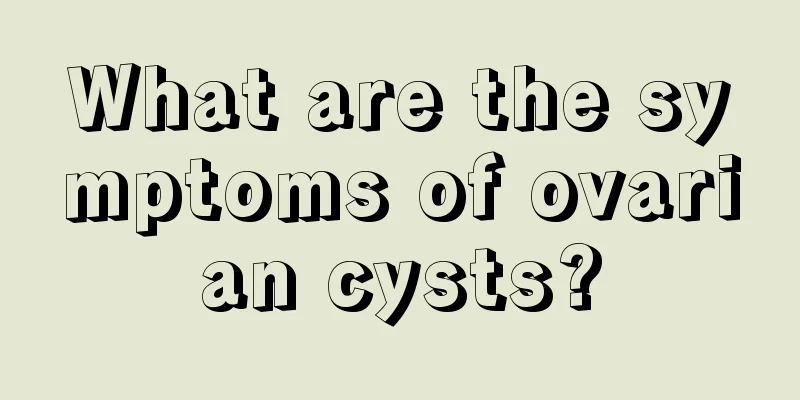What are the symptoms of ovarian cysts?

|
Ovarian cyst is a relatively common gynecological disease. Most of the time, women with ovarian cysts will feel pain in the lower abdomen, irregular menstruation, and sometimes non-menstrual bleeding. Once women are found to have ovarian cysts, they should seek treatment in time. Let us learn about some common symptoms of ovarian cysts. 1. Lower abdominal distension and pain is the initial symptom before the patient touches a lower abdominal mass. Due to the weight of the tumor itself and the influence of intestinal peristalsis and changes in body position, the tumor moves in the pelvic cavity, involving its pedicle and pelvic infundibulum ligament, causing the patient to have a feeling of fullness and falling in the lower abdomen or iliac fossa. This is one of the early symptoms of ovarian cysts. 2. Increased abdominal circumference and abdominal swelling. It is the most common phenomenon in the chief complaint. The patient finds that his clothes or belt seem tight and small, and then he notices that his abdomen is enlarged, or he feels it accidentally in the morning, so he presses his abdomen and finds a tumor in his abdomen, coupled with abdominal distension and discomfort. 3. Menstrual disorders are also the main early symptoms of ovarian cysts. Generally, ovarian cysts, even bilateral ovarian cysts, do not cause menstrual disorders because they do not destroy all normal ovarian tissue. Some uterine bleeding is not endocrine in nature. It may be caused by ovarian tumors that change the pelvic blood vessel distribution, causing endometrial congestion; or it may be caused by ovarian malignant tumors directly metastasizing to the endometrium. Menstrual disorders caused by endocrine tumors are often combined with other secretory influences. 4. Compression symptoms. Huge ovarian tumors can cause dyspnea and palpitations due to compression of the diaphragm. Ovarian tumors combined with a large amount of ascites can also cause these symptoms. However, the dyspnea of some ovarian tumor patients is caused by unilateral or bilateral pleural effusion, and is often combined with ascites, forming the so-called Meigs syndrome. This is also an early symptom of ovarian cyst. Therefore, when female friends experience the above symptoms, they should pay enough attention and go to the hospital for examination as soon as possible. When it is found that it is caused by ovarian cysts, they should also promptly find out whether the ovarian cysts are benign or malignant, and then treat them with some effective methods according to the specific condition. |
<<: What should I do if I have a cyst in my cervix?
>>: How to treat moderate cervical erosion?
Recommend
The penis is hard and a bit painful
Some women may inadvertently notice a hard lump o...
Scientifically control blood sugar: how can diabetic patients achieve accurate self-monitoring?
Author: Liu Xiangyi, Professor of Beijing Tongren...
Thigh muscle pain after abortion
Whether a woman has a miscarriage or an abortion,...
Can I apply plaster on my waist during menstruation?
It is best not to apply pain-relieving plasters d...
Can I wear high heels during menstruation?
Women all like to wear high heels, which can not ...
For women’s fitness, these five ways of walking will make you feel more energetic!
Women who want to exercise don’t have to go to th...
How to reduce internal heat in the hot summer? Teach you how to eat these 5 kinds of "bitter" →
After entering summer, the temperature rises, the...
Can I take deep sea fish oil during menstruation?
Diet during menstruation is worthy of our attenti...
Can you touch a pregnant woman's belly?
After becoming pregnant, mothers watch their bell...
I have had a miscarriage for half a month and my stomach hurts
Abdominal pain after abortion is a common phenome...
[Medical Q&A] What high-risk factors make nasopharyngeal cancer approach quietly?
Planner: Chinese Medical Association Reviewer: Li...
Can I eat grapes when I have my period?
Grapes are a common fruit in our lives. They tast...
Forrester: Apple will sell $39 billion worth of Macs and iPads in 2014
Forrester report says Apple will sell up to $39 bi...
How to maximize your chances of conceiving twins
We often see in the news that celebrities give bi...
What does the vagina look like?
We all know that the vagina is very important for...









